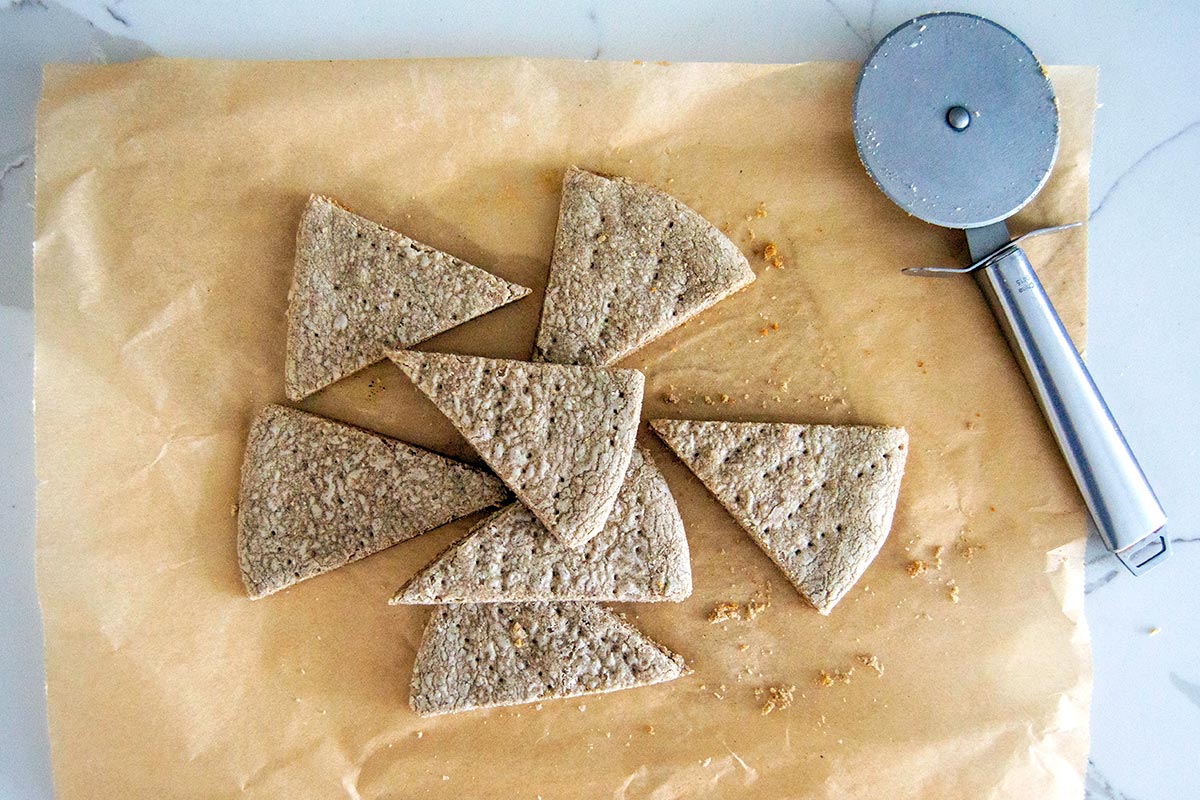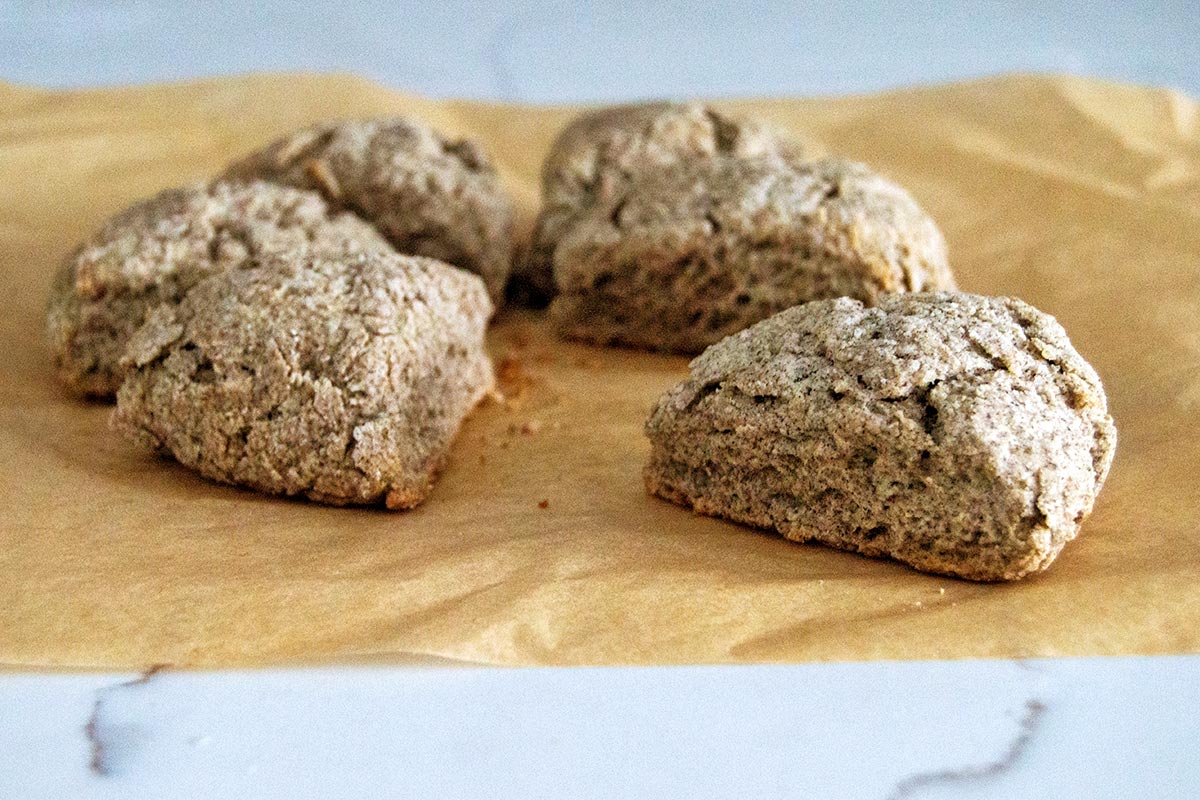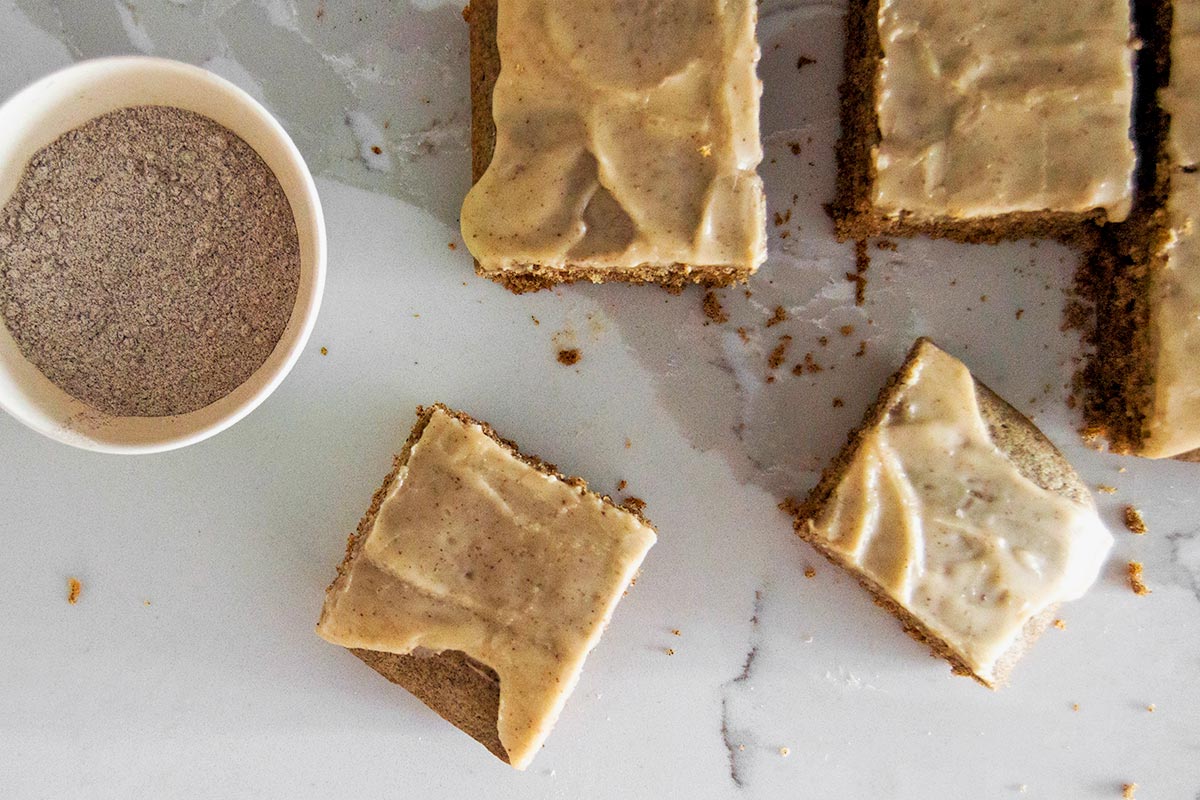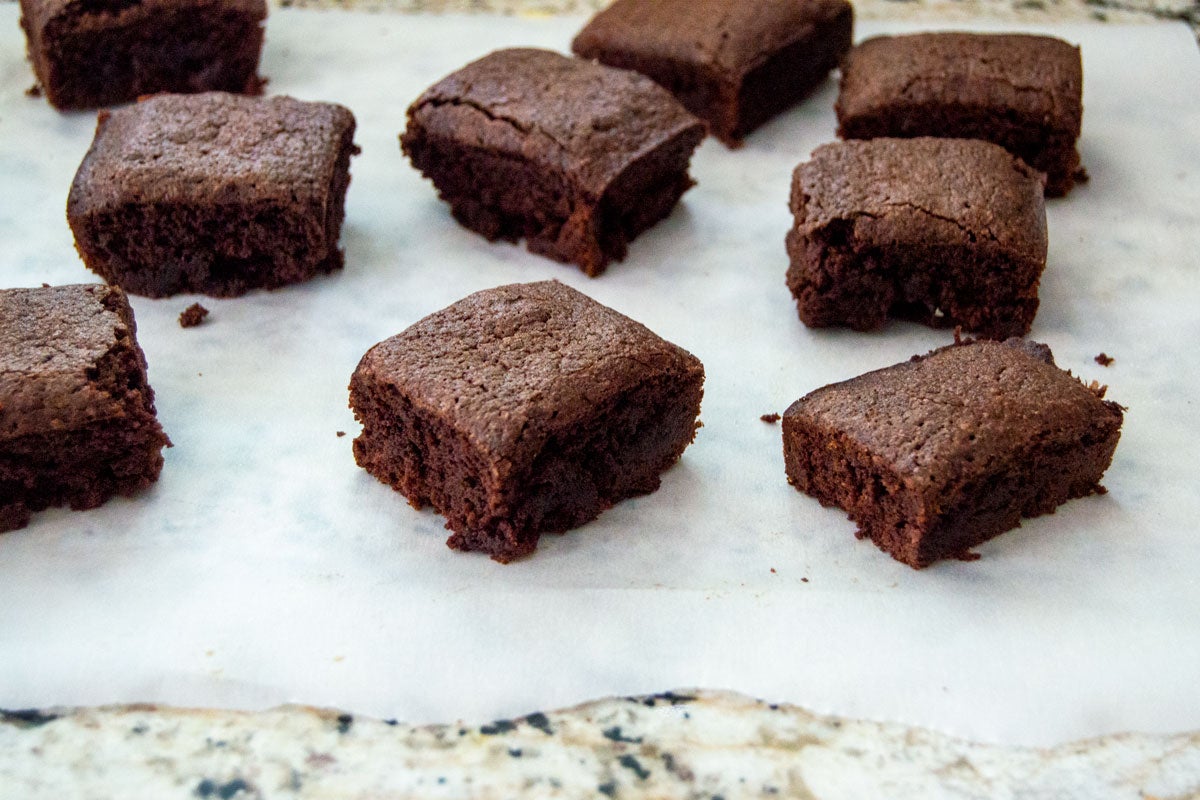A guide to baking with buckwheat
This under-appreciated flour is the key to more flavorful bakes.


Buckwheat can be a confusing flour. It’s neither a grain nor a grass, but technically something known as a “pseudo-grain.” Despite the glaring “wheat” in its name, it’s actually gluten-free. And with a pronounced earthy flavor that can veer slightly bitter (in a good way!), it can be difficult to decide if it’s best suited for recipes that are sweet or savory.
The answer to that last question? Both! Which is why this under-appreciated flour can be one of the most exciting whole grain flours for baking.

Buckwheat is grown and consumed all over the world, a foundation of staple dishes ranging from Japanese soba noodles to Russian porridges. Full of protein and fiber, it’s grain-free and gluten-free, making it an excellent choice for those following special diets.
Buckwheat isn’t just a superstar in the kitchen, either; it also has benefits in agriculture. Like rye, it’s a valuable and effective cover crop: It can help prevent erosion, thrives in poor and infertile soil, smothers weeds, and more.
Buckwheat impacts both the taste and texture of your baked goods.
First, the taste. Buckwheat has a distinct flavor: earthy, savory, and grassy, with notes of rose and a slight bitterness. This complexity shines beautifully in baked goods either savory or sweet, though that assertive taste may be too overwhelming if used in large quantities at once. (Buckwheat is usually used in combination with another, more mild-tasting flour.)
On the sweet side, buckwheat goes nicely with baked fruits, nuts, chocolate, and caramel — deep, dark flavors that might best be described as “cozy.” When it comes to savory, buckwheat is a good companion for rich, salty ingredients like cheese, cured meats, capers, sour cream, and more.
Because buckwheat is gluten-free, it also lends a different texture to baked goods than wheat flour. It won’t give you light, fluffy yeast bread because there’s no gluten to be developed, but it does add moistness to cakes and tenderness to cookies and bars. If used in large amounts compared to another flour in the recipe, it has a tendency to make muffins, cakes, and quick breads gummy, which is a pitfall to watch out for.
If you’re ready to pick up a bag of buckwheat and get to baking, you can always start with recipes already developed for this unique flour, like Blini, Buckwheat Crêpes, or Buckwheat and Mushroom Stromboli. Or you can try adding buckwheat to some of your favorite recipes that call for wheat flour.
Because buckwheat doesn’t have gluten, you can’t simply replace all of the wheat flour in a recipe with buckwheat. Instead, start by subbing buckwheat for 25% of the wheat flour in a non-yeasted recipe (by weight or volume).
For bread, you can try subbing buckwheat for 15% of the wheat flour in a yeasted recipe (by weight or volume). Adding a whole grain or gluten-free flour like buckwheat to breads is more finicky than non-yeasted baking: see Martin Philip’s tips for doing so in his post, 3 ways to switch up your bread baking.
Baker's tip: Buckwheat's dark color affects baked goods' appearance, making it hard to gauge browning in the oven. For cakes, use the cues described in our post on how to tell when cake is done; and take cookies and other baked goods fully out of the oven to check their browning in better light.
To see how substituting buckwheat turns out, let's look at a variety of recipes and how buckwheat fares in each of them.

In Exploring the world of whole grain bread, Andrew Janjigian presents the “pancake test” for experimenting with whole grains. As he explains, pancakes are an easy, low-stakes, and near-immediate “pilot study” to try out new whole grains in your baking. As a result, they’re the perfect recipe to first put buckwheat to use.
The recipe: Simply Perfect Pancakes
The result: Made with 33% buckwheat flour (pancakes are a good place to go above the 25% starting point), these pancakes are fluffy and flavorful, with a nice nuttiness that goes well with maple syrup. As for texture, the pancakes are thinner and slightly more delicate.

Shortbread is another excellent way to try out new whole grain flours. The large amount of butter carries the flour’s flavor so it’s more pronounced; what’s more, you don’t need to worry how the flour will affect structure and rise, since that’s not really a factor in these dense, crumbly cookies.
The recipe: Shortbread
The result: Subbing buckwheat flour for 25% of the all-purpose flour yields cookies with a noticeable gray color and nicely crumbly texture. The buckwheat accentuates the butter’s flavor rather than masking it, for a rich, robust shortbread with welcome complexity.

With their tender crumb and flaky texture, scones are a careful balance of ingredients and a bit fussier than pancakes or shortbread. Let’s see how swapping out some wheat flour for buckwheat impacts them.
The recipe: Scones
The result: With that signature dark color from the buckwheat flour, these scones look like a more virtuous version of typically indulgent butter scones. But that’s not the case at all. They’re actually the more flavorful version of plain Jane scones, with a deep nuttiness that pairs well with mix-ins like dried cherries or toasted pecans. The scones are a bit more dense than normal, but not overtly so.

Cake is an excellent place to bake with more buckwheat, because the flour’s earthy flavor tones down overly sweet icings and glazes. Buckwheat is particularly good for cakes that are moist or dense, thanks to its gluten-free nature.
The recipe: Vanilla Cake Pan Cake
The result: This cake is a simple dump-and-stir situation with a basic vanilla flavor profile, making it an excellent blank canvas to swap in 25% buckwheat flour. The earthy buckwheat tamps down some of the sweetness for a more grown-up cake that pairs well with a brown butter glaze. The cake’s texture, meanwhile, remains almost as fluffy.

Picking favorites among baked goods is like choosing from your own children, but it’s not hard to see the best has been saved for last here. In brownies, dark, rich chocolate pairs beautifully with the complex, grassy flavor of buckwheat (not unlike the flavor combo found in chocolate olive oil cake!). Plus, the buckwheat flour yields a dense, fudgy brownie ideal for anyone who shudders at the thought of a cake-like brownie.
The recipe: Quick and Easy Fudge Brownies
The result: This swap yields a brownie where the buckwheat flavor is more of a subtle accent, rather than the dominating feature. If anything, it makes the chocolate extra, well, chocolatey. The brownies are more delicate than typical recipes made with all wheat flour, and also nice and dense.
If you're ready to start baking with buckwheat, you can order King Arthur buckwheat flour through our online shop.
Cover photo by Liz Neily